#robert r. Livingston
Explore tagged Tumblr posts
Text


Too many old stuffs lol dk which to post everyday
tagging these names makes me sick
#amrev#amrev fandom#thomas jefferson#james monroe#james madison#martin van buren#andrew jackson#john quincy adams#daniel webster#john c. calhoun#henry clay#alexander hamilton#aaron burr#john marshall#john jay#gouverneur morris#robert r. Livingston#patrick henry#george washington#john adams
167 notes
·
View notes
Text






The rest of the founding cats are done plus King George cat cauee I couldn’t not make that
#rays art#history#us history#amrev#samuel adams#roger sherman#john hancock#robert r livingston#richard henry lee#king george iii
62 notes
·
View notes
Text

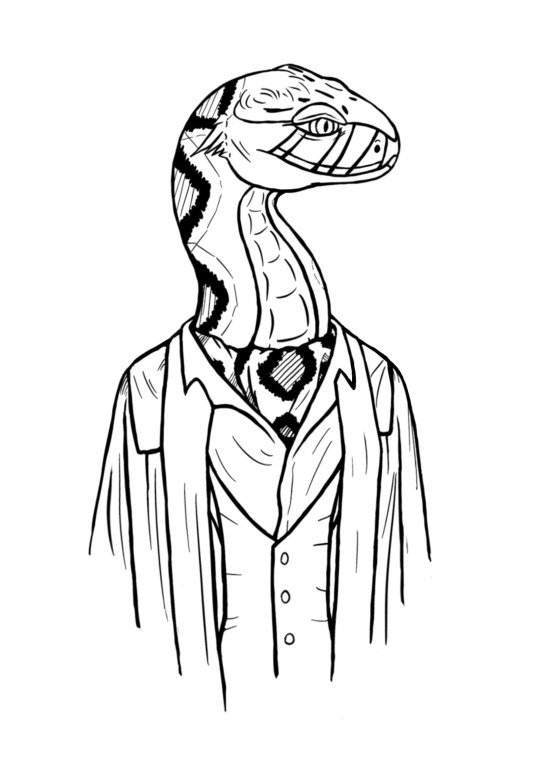








Some furry doodle, based on @dustzvacuumcleaner 's character design!Yeah it's the dangaronpa AU (who could tell lol)
Just like the original Monokuma Theatre, dgrp!Amrev's Monoturkey(MONOTURKEY🦃)has his own Picture Book, and everyone inside are represented as some kind of animal(it's a metaphor)
I have all the stories and plots in my head but writing them out is such a tiring work and I'm too lazzzzyyyyy right now🤪 sorry……
Patrick Henry - Belgian hare
John Marshall - Eastern diamondback rattlesnake
Philip Freneau - Appaloosa
Thomas Paine - Sulphur-crested cockatoo
Robert R. Livingston - Common dolphin("short-beaked")
John Jay - Eurasian jay
Aaron Burr - Black-backed jackal
Alexander Hamilton - Indian peafowl
James Madison - Burrowing owl
Thomas Jefferson - Moose
(My English is so poor I can't even tell what am I writing😭)
#19th century rpf#amrev#amrev fandom#Danganronpa!Amrev#Patrick Henry#John Marshall#Philip Freneau#thomas paine#robert livingston#john jay#aaron burr#alexander hamilton#James Madison#Thomas Jefferson#furry design
21 notes
·
View notes
Text
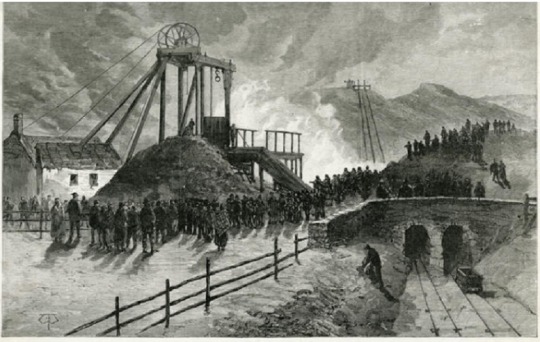

Tragedy struck Midlothian on September 5th 1889 when Sixty-three miners, some as young as thirteen, died in an underground fire at Mauricewood Pit, at Penicuik, Midlothian.
This was the worst mining disaster in the history of the Lothians and the cause was never discovered, or at least disclosed.
The following is extracted from “The Mauricewood Braves” one of Wilsons ‘Mining Lays, Tales and Folk-lore’ published 1916.
“The Mauricewood Pit, at Penicuik, near Edinburgh, took fire on September 5th, 1889, and sixty eight men and boys lost their lives. The principal product from the pit was ironstone, although coal in small quantities was also produced. The pit had a vertical shaft of 480 feet then a level roadway eastwards of 180 feet and this was followed by a one in eight dip decline of 960 feet (Deaths Incline). Halfway down the decline a steam engine had been erected and another steam engine did duty at the bottom. The steam pipes traversed this route, and it was at the 800 ft slant that the fire broke out among the support timbers. The wood was tinder and inflammable, and it was soon apparent that the conflagration would spread and become disastrous. There were no other outlets to or from the lower level, and unless the men below received a warning note to give them a chance of escape, they must inevitably perish. Three trapper and pony boys – Robert Hook Tolmie (my own surname but no relation) , aged 14; Michael Hamilton, aged 15; and Thomas Foster, aged 17 years, volunteered to go round the mine and warn all the men below of their danger, but the only shiftman there, his mate was away in another district of the pit- pleaded with the boys not to go away and said that he would go himself to warn the other men of the fires danger, but the boys in unison shouted as they ran “No, we’ll go” ….. And they went. The brave boys never came back alive. “They died to save” The bodies of the boys were afterwards recovered (surrounded by over twenty other bodies) near a trapdoor that had got blocked up in the meantime cutting off the avenue of escape. The mine was subsequently flooded to quench the fire that was raging in the workings, and over a year elapsed before the last body was brought to the surface.
The heroism and self-sacrifice of the three lads aroused sympathetic expressions and admiration throughout the mining world, and a monument marks their last resting place in the Penicuik’s KirkHill Cemetery.
Names of Dead
The alphabetical list of names below is from a report in the Scotsman. Among the names is a Robert Tolmie, I wonder if he was some sort of relation to my family, although I did know of some Penicuik Tolmie’s who were not related to us.
Thomas Adams, 7 Manderston Place David Anderson, 1 Manderston Place T Bennett, 4 Lindsay Place William Brockie, 13 Walker Place William Brown, 1 Lindsay Place William Brown, Glebe William Daly, 3 Fieldsend J Davidson, Edinburgh Rd Robert Dempster, father, 6 Lindsay Place R Dempster, son, 6 Lindsay Place William Dempster, 19 Walker Place Robert Dickson, 13 Fieldsend Thomas Foster 13 Leslie Place John Fraser 27 Napier St John Glass, Pryde's Place William Grieve, 5 Leslie Place C Hamilton, son, Greenlaw Cottages Mitchell Hamilton, father, Greenlaw Cottages Mitchell Hamilton, son, Greenlaw Cottages Robert Hamilton, 4 Leslie Place - uncle of Richard Hamilton, brother-in-law of Robert Tolmie Richard Hamilton, 4 Leslie Place - nephew of Robert Hamilton Robert Hunter, Roads farm William Hunter, 8 Walker Place- father-in-law of David Penman Thomas Hunter, Pike James Irvine, 10 Leslie Place David Kinnimont, father, Roslin Robert Kinnimont, son, Roslin William Lamb, 5 Walker Place - son of Robert Lamb, Leven, Fife George Livingstone, 22 Fieldsend Alex McInlay, 12 Leslie Place David McKenzie, 10 Lindsay Place Hugh McPherson, father, 12 Lindsay Place Peter McPherson, son, 12 Lindsay Place Thomas Meikle, 5 Lindsay Place William Meikle, father, 6 Leslie Place William Meikle, son, 6 Leslie Place Walter Meikle, 6 Leslie Place Robert Millar, 3 Fieldsend - stepson of William Daly William Miller, 3 Fieldsend - stepson of William Daly Martin Morgan, Pryde's Place G Muir, Greenlaw Cottages David Penman, 8 Walker Place - son-in-law of Wm Hunter George Pennycuik, father, 12 Walker Place George Pennycuik, son, 12 Walker Place D Porterfield (brother of Robert Porterfield) Robert Porterfield (brother of D Porterfield) James Porteous, 5 Walker Place J Purves, 10 Lindsay Place John Sinnott 7 Fieldsend James Somerville, 18 Napier St Alex Stewart, John Street James Stark, nephew, Pike M Stark, uncle, Pike Thomas Strang, 2 Walker Place Robert Tolmie, brother-in-law of Robert Hamilton William Urquhart, Eskbridge John Walker 4 Fieldsend John Walker, James Place Andrew Wallace, brothers, 2 Lindsay Place David Wallace, brothers, 2 Lindsay Place James Wright, brothers, 9 Lindsay Place William Wright, brothers, 9 Lindsay Place Matt Wright, 8 Leslie Place
11 notes
·
View notes
Text
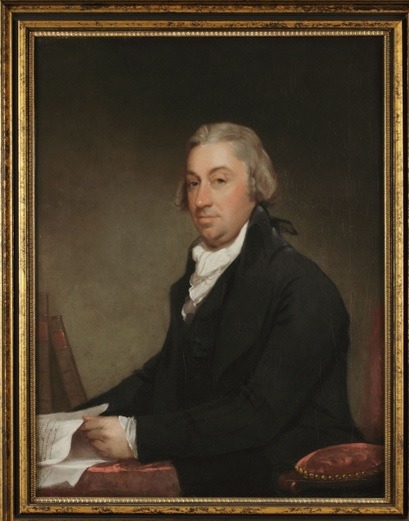
Chancellor Robert R. Livingston by Ezra Ames, 1814-15.
7 notes
·
View notes
Note
Has any president ever not been given the oath of office by the chief justice of the supreme court
Yes. The Constitution does not specify who must administer the oath of office to the President and government officials who are required to swear (or affirm) an oath can essentially be sworn in by any federal or state judge or even a notary public.
The oath of office has been administered eight times by someone other than the Chief Justice of the United States -- usually when a Vice President has assumed office upon a President's death and it was necessary to quickly locate somebody who could administer the oath. George Washington was also sworn in by someone other than the Chief Justice at both of his inaugurations. In fact, not only was there no Chief Justice at the time of Washington's first inauguration but there was literally no federal judiciary (and, obviously, no federal judges). The Judiciary Act establishing the Supreme Court wasn't enacted until September 1789 -- almost five months into President Washington's first term -- and that's when the first members of the Supreme Court were nominated and confirmed.
Of course, the Chief Justice of the United States has been the person swearing in the President the vast majority of the time. John Marshall, the longest-serving Chief Justice in American history (1801-1835), administered the oath of office more times than anyone else -- nine times to five different Presidents. However, Chief Justice Roger B. Taney (served from 1836-1864) administered the oath to more individual Presidents than anyone else -- seven times to seven different Presidents. The nation's first two Chief Justices -- John Jay (1789-1795) and John Rutledge (August-December 1795) -- are the only two Chiefs who never administered the oath to a President.
Here is the list of Presidential Inaugurations not conducted by the Chief Justice of the United States along with the person who administered the oath of office: •GEORGE WASHINGTON's 1st Inauguration (April 30, 1789): Robert Livingston, Chancellor of New York (The Chancellor of New York was the presiding judge of the New York Court of Chancery, the highest court in New York State from 1701-1847) •GEORGE WASHINGTON's 2nd Inauguration (March 4, 1793): William Cushing, Associate Justice of the U.S. Supreme Court •JOHN TYLER's Inauguration (April 4, 1841): William Cranch, Chief Judge of the U.S. Circuit Court of the District of Columbia (Tyler assumed office upon the death of President William Henry Harrison. Interestingly, Cranch was the nephew of John and Abigail Adams.) •MILLARD FILLMORE's Inauguration (July 9, 1850): William Cranch, Chief Judge of the U.S. Circuit Court of the District of Columbia (Fillmore assumed office upon the death of President Taylor.) •CHESTER A. ARTHUR's Inauguration (September 20, 1881): John R. Brady, Justice of the New York State Supreme Court (Arthur assumed office upon the death of President Garfield. Brady was the first judge that could be tracked down to administer the oath at Arthur's home in New York City after notification of Garfield's death arrived shortly after midnight on Sept. 20, 1881. After returning to Washington, D.C. on September 22, 1881, Arthur was administered the oath of office again in a formal ceremony by Chief Justice Morrison Waite.) •THEODORE ROOSEVELT's 1st Inauguration (September 14, 1901): John R. Hazel, Judge of the U.S. District Court for the Western District of New York (Roosevelt assumed office upon the death of President McKinley.) •CALVIN COOLIDGE's 1st Inauguration (August 3, 1923): John Calvin Coolidge Sr., Justice of the Peace and Notary Public in Plymouth, Vermont (Coolidge assumed office upon the death of President Harding. Coolidge was staying at his father's home in Vermont when he was notified shortly after midnight on August 3, 1923 that President Harding had died a few hours earlier in San Francisco. Since Coolidge's father was a Notary Public, he administered the oath of office to his son in the sitting room of the family home. After being sworn in by his father, President Coolidge promptly went back to sleep.) •LYNDON B. JOHNSON's 1st Inauguration (November 22, 1963): Sarah T. Hughes, Judge of the U.S. District Court for the Northern District of Texas (Johnson assumed office upon the death of President Kennedy. Johnson was in Dallas with Kennedy when the President was assassinated, and he was sworn in as President aboard Air Force One on the airport tarmac of Love Field before leaving Texas to return to Washington with Kennedy's body.)
#History#Presidents#Presidential Oath of Office#Oath of Office#Presidential Inaugurations#Inaugurations#Swearing-in the President#Presidential Oath#Politics#Chief Justice of the United States#Supreme Court#Chief Justice#Constitution#POTUS#Presidents and Chief Justices#Judiciary#SCOTUS
25 notes
·
View notes
Note
y-you're so skibidi sigma 🥺👉👈🚽🚽
yes.
Thomas Jefferson drafted the Declaration of Independence in Philadelphia behind a veil of Congressionally imposed secrecy in June 1776 for a country wracked by military and political uncertainties. In anticipation of a vote for independence, the Continental Congress on June 11 appointed Thomas Jefferson, John Adams, Benjamin Franklin, Roger Sherman, and Robert R. Livingston as a committee to draft a declaration of independence. The committee then delegated Thomas Jefferson to undertake the task. Jefferson worked diligently in private for days to compose a document. Proof of the arduous nature of the work can be seen in the fragment of the first known composition draft of the declaration, which is on public display here for the first time.
Jefferson then made a clean or "fair" copy of the composition declaration, which became the foundation of the document, labeled by Jefferson as the "original Rough draught." Revised first by Adams, then by Franklin, and then by the full committee, a total of forty-seven alterations including the insertion of three complete paragraphs was made on the text before it was presented to Congress on June 28. After voting for independence on July 2, the Congress then continued to refine the document, making thirty-nine additional revisions to the committee draft before its final adoption on the morning of July 4. The "original Rough draught" embodies the multiplicity of corrections, additions and deletions that were made at each step. Although most of the alterations are in Jefferson's handwriting (Jefferson later indicated the changes he believed to have been made by Adams and Franklin), quite naturally he opposed many of the changes made to his document.
Congress then ordered the Declaration of Independence printed and late on July 4, John Dunlap, a Philadelphia printer, produced the first printed text of the Declaration of Independence, now known as the "Dunlap Broadside." The next day John Hancock, the president of the Continental Congress, began dispatching copies of the Declaration to America's political and military leaders. On July 9, George Washington ordered that his personal copy of the "Dunlap Broadside," sent to him by John Hancock on July 6, be read to the assembled American army at New York. In 1783 at the war's end, General Washington brought his copy of the broadside home to Mount Vernon. This remarkable document, which has come down to us only partially intact, is accompanied in this exhibit by a complete "Dunlap Broadside"—one of only twenty-four known to exist.
On July 19, Congress ordered the production of an engrossed (officially inscribed) copy of the Declaration of Independence, which attending members of the Continental Congress, including some who had not voted for its adoption, began to sign on August 2, 1776. This document is on permanent display at the National Archives.
On July 4, 1995, more than two centuries after its composition, the Declaration of Independence, just as Jefferson predicted on its fiftieth anniversary in his letter to Roger C. Weightman, towers aloft as "the signal of arousing men to burst the chains...to assume the blessings and security of self-government" and to restore "the free right to the unbounded exercise of reason and freedom of opinion."
source: https://www.loc.gov/exhibits/declara/declara3.html
4 notes
·
View notes
Text
An update as of this morning. They have halted the execution!
Copy/paste of the article:
House members were successful in halting the execution of Texas death row inmate Robert Roberson III. The Supreme Court of Texas granted a stay late Thursday night.
"We are deeply grateful to the Texas Supreme Court for respecting the role of the Texas legislature in such consequential matters. We look forward to welcoming Robert to the Texas Capitol, and long with 31 million Texans, finally giving him -- and the truth -- a chance to be heard," Texas House Criminal Jurisprudence Committee chairmen Joe Moody and Jeff Leach said in a joint statement Thursday night.
Roberson was scheduled to be executed by lethal injection at about 6 p.m. Thursday, for the 2002 death of his 2-year-old daughter.
The state's legal fight to get the execution carried out faced a midnight CDT deadline when the death warrant authorizing Roberson's execution expired.
The Texas Department of Criminal Justice said late Thursday night that Roberson will be moved back to the Polunsky Unit in Livingston, Texas.
"I had the opportunity to go back there to speak with him, and he was shocked to say the least. He praised God, to thank his supporters," said Amanda Hernandez with the TDCJ.
Roberson was convicted in 2003 of shaking his daughter, Nikki Curtis, to death in a diagnosis known as shaken baby syndrome. Roberson's attorneys said new evidence suggests that's not what killed the little girl and that his life should be spared.
The stay came after a flurry of legal proceedings Thursday and the Supreme Court of the United States denying a stay for Roberson. The high court said it would be up to Gov. Greg Abbott to stop the execution with a 30-day stay.
TEMPORARY RESTRAINING ORDER FILED IN ATTEMPT TO HALT EXECUTION
On Wednesday, the Texas Board of Paroles and Pardons declined to recommend clemency, and Texas Gov. Greg Abbott cannot grant it without that recommendation. Abbott could still issue a one-time 30-day stay of execution, and while he's been active on social media Thursday, he's been silent about the upcoming execution.
In a daylong hearing Wednesday, the Texas House Committee on Criminal Jurisprudence unanimously passed a motion to subpoena Roberson after hours of testimony from experts who recently reviewed his 2003 conviction. The committee found relevant scientific evidence is available today that was not available at the time of Roberson's trial that would be admissible under current rules.
But the subpoena alone was not enough to stop the execution. House members on the committee filed a temporary restraining order on Thursday attempting to prevent the Texas Department of Criminal Justice from proceeding with the execution until the subpoena can be carried out and Roberson testifies in a hearing next week. A district judge granted that TRO.
TEXAS ATTORNEY GENERAL'S OFFICE APPEALS TRO
The Texas Attorney General's Office appealed the TRO immediately.
Late Thursday, the state's highest criminal court overruled a Travis County judge's TRO.
NBC 5 has asked the TDCJ whether the execution is delayed pending that appeal, and it indicated the execution is delayed pending the outcome of legal proceedings.
LAWMAKERS APPEAL TO TEXAS SUPREME COURT
Thursday night the same lawmakers who filed the subpoena and the TRO took their appeal to the Supreme Court of Texas.
"Our current pleading in front of the Texas Supreme Court is truly the last chance to push a pause on his execution," Rep. Jeff Leach, R-Plano told NBC 5 Thursday night.
Leach indicated the execution couldn't proceed until there was a ruling on the appeal.
"It's unbelievable that we're at this point, given the unprecedented hearings that we saw yesterday take place in the Texas legislature, given the widespread bipartisan support, and just really overwhelming support from so many people coming forward, recognizing that this is such a problematic case that Robert has a strong claim of innocence, and if this execution goes forward, Texas is going to be executing a man for a crime that never occurred,” said Vanessa Potkin, director of special litigation for the Innocence Project on Thursday. “Mr. Roberson is a man of deep faith. He has sustained himself through his faith prayer and he is just so moved by the overwhelming support.”
SUPREME COURT REFUSES TO WEIGH IN ON CASE
Meanwhile, on Thursday, the United States Supreme Court said despite saying credible evidence of his innocence has been raised it could not grant a stay in the case. Justice Sonia Sotomayor said that Roberson's only avenue for a reprieve was with the governor, who had the authority to grant pardons and delay executions.
"An executive reprieve of 30 days would provide the Texas Board of Pardons and Paroles with an opportunity to reconsider the evidence of Roberson’s actual innocence. That could prevent a miscarriage of justice from occurring: executing a man who has raised credible evidence of actual innocence," Sotomayor wrote.
If the execution is carried out, Roberson would be the first person in the United States executed for a murder conviction tied to a diagnosis of shaken baby syndrome.
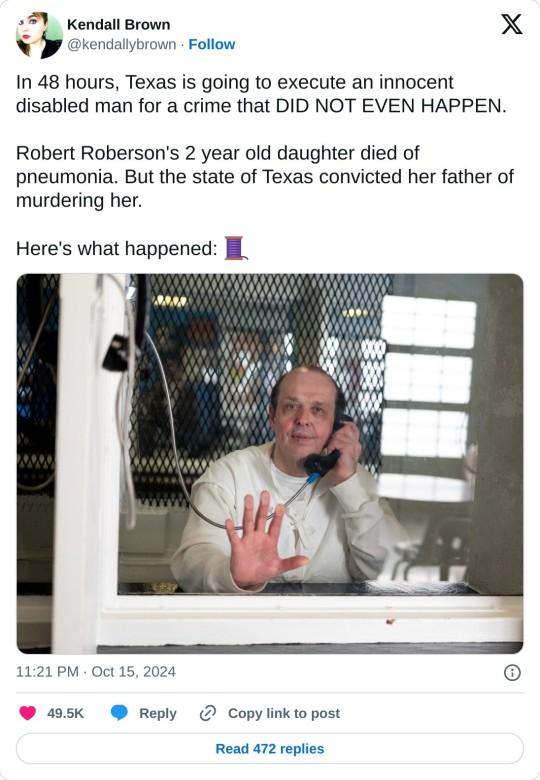
I’m not going to do one of those “REBLOG OR YOU’RE A HORRIBLE PERSON!!!!!!1!” posts, but please, if you have the time, read about Robert Roberson.
Neurodivergent people, we especially need to pay attention to this. This is a man who was sent to death row because he appeared too “stoic”. He was formally diagnosed with autism after. I’m sure you already know that this is only one part of a larger pattern of flaws. Fellow victims of the US’ crap legal system, we need to say something. I don’t care if you think it won’t work, we still have to give them hell. They may have power, but they need to know damn well we won’t sit by and let people die.
Greg Abbott’s number (yes, of course it’s Texas) is 361-264-9653. Give him a call if you have the time. If calls freak you out, text. If you don’t want to do that, sign the petition. You have the chance to change history right now.
Most importantly, take care of yourself. All this tragedy drains the soul, especially when it hits close to home. After you’re done with this post, drink some water and watch something nice or, better yet, step away from the screen for a bit. You deserve it and more.
2K notes
·
View notes
Text
Events 6.11 (before 1920)
173 – Marcomannic Wars: The Roman army in Moravia is encircled by the Quadi, who have broken the peace treaty (171). In a violent thunderstorm emperor Marcus Aurelius defeats and subdues them in the so-called "miracle of the rain". 631 – Emperor Taizong of Tang sends envoys to the Xueyantuo bearing gold and silk in order to seek the release of Chinese prisoners captured during the transition from Sui to Tang. 786 – A Hasanid Alid uprising in Mecca is crushed by the Abbasids at the Battle of Fakhkh. 980 – Vladimir the Great consolidates the Kievan realm from Ukraine to the Baltic Sea. He is proclaimed ruler (knyaz) of all Kievan Rus'. 1011 – Lombard Revolt: Greek citizens of Bari rise up against the Lombard rebels led by Melus and deliver the city to Basil Mesardonites, Byzantine governor (catepan) of the Catepanate of Italy. 1118 – Roger of Salerno, Prince of Antioch, captures Azaz from the Seljuk Turks. 1157 – Albert I of Brandenburg, also called The Bear (Ger: Albrecht der Bär), becomes the founder of the Margraviate of Brandenburg, Germany and the first margrave. 1345 – The megas doux Alexios Apokaukos, chief minister of the Byzantine Empire, is lynched by political prisoners. 1429 – Hundred Years' War: Start of the Battle of Jargeau. 1488 – Battle of Sauchieburn: Fought between rebel Lords and James III of Scotland, resulting in the death of the king. 1509 – Henry VIII of England marries Catherine of Aragon. 1559 – Don Tristan de Luna y Arellano sails for Florida with party of 1,500, intending to settle on gulf coast (Vera Cruz, Mexico). 1594 – Philip II recognizes the rights and privileges of the local nobles and chieftains in the Philippines, which paved way to the stabilization of the rule of the Principalía (an elite ruling class of native nobility in Spanish Philippines). 1702 – Anglo-Dutch forces skirmish with French forces before the walls of Nijmegen and prevent its fall. 1748 – Denmark adopts the characteristic Nordic Cross flag later taken up by all other Scandinavian countries. 1770 – British explorer Captain James Cook runs aground on the Great Barrier Reef. 1775 – The Coronation of Louis XVI in Reims, the last coronation before the French Revolution. 1775 – The American Revolutionary War's first naval engagement, the Battle of Machias, results in the capture of a small British naval vessel. 1776 – The Continental Congress appoints Thomas Jefferson, John Adams, Benjamin Franklin, Roger Sherman, and Robert R. Livingston to the Committee of Five to draft a declaration of independence. 1788 – Russian explorer Gerasim Izmailov reaches Alaska. 1805 – A fire consumes large portions of Detroit in the Michigan Territory. 1825 – The first cornerstone is laid for Fort Hamilton in New York City. 1837 – The Broad Street Riot occurs in Boston, fueled by ethnic tensions between Yankees and Irish. 1865 – The Naval Battle of the Riachuelo is fought on the rivulet Riachuelo (Argentina), between the Paraguayan Navy on one side and the Brazilian Navy on the other. The Brazilian victory was crucial for the later success of the Triple Alliance (Brazil, Uruguay, and Argentina) in the Paraguayan War. 1892 – The Limelight Department, one of the world's first film studios, is officially established in Melbourne, Australia. 1895 – Paris–Bordeaux–Paris, sometimes called the first automobile race in history or the "first motor race", takes place. 1901 – The boundaries of the Colony of New Zealand are extended by the UK to include the Cook Islands. 1903 – A group of Serbian officers storms the royal palace and assassinates King Alexander I of Serbia and his wife, Queen Draga. 1917 – King Alexander assumes the throne of Greece after his father, Constantine I, is deemed to have abdicated under pressure from allied armies occupying Athens. 1919 – Sir Barton wins the Belmont Stakes, becoming the first horse to win the U.S. Triple Crown.
0 notes
Text
Lunar Codex
I am privileged to share that mention of and images of my work have been included in the Lunar Codex.
The Lunar Codex is the passion project of physicist, entrepreneur, and storyteller Samuel Peralta, who alongside NASA’s Artemis Program has placed a record of contemporary creative works from “35,000 artists, writers, musicians, and filmmakers, representing 234 countries, territories, and Indigenous nations, in time capsules launching from Earth to the Moon and beyond.” *
Read more about the Lunar Codex here.
My work was included in two issues of magazines that have been gathered into the the Lunar Codex using digital and analog technology:
50 MEMORABLE PAINTERS
published by GOSS183 in 2015 Special PA (PoetsArtists) issue curated by John Seed and Didi Menendez
Featuring art from: Alexsander Betko ▪ Jeffrey Bess ▪ Charis Carmichael Braun ▪ Ali Cavanaugh ▪ Matthew Ivan Cherry ▪ Erica Elan Ciganek ▪ Ben Cressy ▪ Gabriela G. Dellosso ▪ Emanuela De Musis ▪ Shawn Fields ▪ Ron Francis ▪ Zoey Frank ▪ Patrick Earl Hammie ▪ Graham Harwood ▪ Mark Heine ▪ Erika B. Hess ▪ Jen Hitchings ▪ Milan Hrnjazovic ▪ Karen Kaapcke ▪ Michael Kozlowski ▪ Valeri Larko ▪ Brianna Lee ▪ Kim Leutwyler ▪ Shana Levenson ▪ Zachari Logan ▪ Susannah Martin ▪ Renee McGinnis ▪ Darian Rodriguez Mederos ▪ Sylvia Maier ▪ Shie Moreno ▪ Rachel Moseley ▪ Judith Peck ▪ John Philbin Dolan ▪ Serena Potter ▪ Nadine Robbins ▪ Beverly Rippel ▪ Cesar Santos ▪ Victoria Selbach ▪ Ed Smiley ▪ Kyle Staver ▪ Barry Smith ▪ Albert Leon Sultan ▪ Emily Thompson ▪ Alexandra Tyng ▪ Conor Walton ▪ Nick Ward ▪ Thomas Wharton ▪ Margaret Withers ▪ Meg Wolensky ▪ Stephen Wright
Vehicle(s) and launch dates: Peregrine / PM1 - NASA CLPS-TO2-AB / Astrobotic Peregrine Mission 1 (Jan 8-18, 2024); Polaris / GM1 - NASA CLPS-TO-20A (VIPER) / Astrobotic Griffin Mission 1 (Nov 2024).
POETSARTISTS #57
published by GOSS183 in September 2014 curated by Didi Menendez
Featuring:
Poets : Leila Ammar ▪ Jan Ball ▪ Nin Andrews ▪ P.H. Davis ▪ Carlton Fisher
Artists : cover photo of Bryce Ramming by Michael Auer ▪ Jorg Dubin ▪ Charis J. Carmichael Braun ▪ Alvin Richard ▪ Tristan Pigott ▪ Eric Daniel Almanza ▪ Shawn Huckins
Collaborations : Paul Beel & Grace Cavalieri ▪ Kate Lutzner & Victoria Selbach ▪ Angela Hardy & Lorraine Currelley ▪ Daniel Maidman & Nin Andrews ▪ Judith Peck & Pris Campbell ▪ Robbie Robb & Larry Lawrence ▪ Judith Peck & Robert Lee Brewer ▪ Debra Livingston & R. J. Slais ▪ James Needham & Melissa McEwen ▪ Jeff Faerber & Denise Duhamel ▪ Matt Calavecchia & Ken Taylor ▪ Debra Balchen & Laurie Kolp ▪ Cesar Conde & Duriel Harris ▪ Timothy Robert Smith & Bill Yarrow
Vehicle and launch date: Polaris / GM1 - NASA CLPS-TO-20A (VIPER) / Astrobotic Griffin Mission 1 (Nov 2024).
Incandence Corp., “The Lunar Codex: Story.” LunarCodex.com, 24 April 2024, https://www.lunarcodex.com/story
0 notes
Text

Thank u @kiliane who sent me the idea & reference and I immediately did this😭😭😭 this is so funny..
It’s been a long time since I draw these New Yorker boys () I somehow wanted to draw them again in dgrp au style
61 notes
·
View notes
Text
Pittsburgh Steamboats: The New Orleans
The Maiden Voyage of the Steamboat New Orleans The New Orleans was the initial steamboat to sail the western waters of the United States. Its ownership lied with Robert Fulton and Robert R. Livingston, and it was fabricated by Nicholas Roosevelt. In 1811-1812, it traveled from Pittsburgh, Pennsylvania to New Orleans, Louisiana, using the Ohio and Mississippi rivers, thus beginning the epoch of…

View On WordPress
0 notes
Text
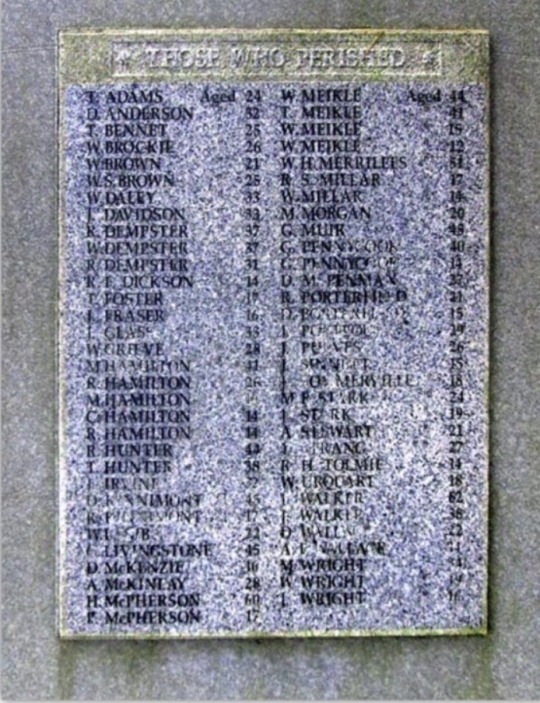
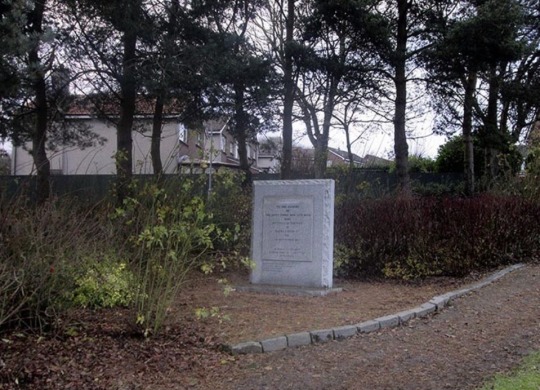

Tragedy struck Midlothian on September 5th 1889 when Sixty-three miners, some as young as thirteen, died in an underground fire at Mauricewood Pit, Penicuik
The cause of which was never discovered, it was the worst mining disaster in the history of the Lothians. Most of them died from suffocation when smoke entered the ventilation system.
The following is extracted from “The Mauricewood Braves” one of Wilsons ‘Mining Lays, Tales and Folk-lore’ published 1916.
“The Mauricewood Pit, at Penicuik, near Edinburgh, took fire on September 5th, 1889, and sixty eight men and boys lost their lives.
The principal product from the pit was ironstone, although coal in small quantities was also produced. The pit had a vertical shaft of 480 feet then a level roadway eastwards of 180 feet and this was followed by a one in eight dip decline of 960 feet (Deaths Incline). Halfway down the decline a steam engine had been erected and another steam engine did duty at the bottom. The steam pipes traversed this route, and it was at the 800 ft slant that the fire broke out among the support timbers. The wood was tinder and inflammable, and it was soon apparent that the conflagration would spread and become disastrous. There were no other outlets to or from the lower level, and unless the men below received a warning note to give them a chance of escape, they must inevitably perish.
Three trapper and pony boys – Robert Hook Tolmie (my own surname but no relation) , aged 14; Michael Hamilton, aged 15; and Thomas Foster, aged 17 years, volunteered to go round the mine and warn all the men below of their danger, but the only shiftman there, his mate was away in another district of the pit- pleaded with the boys not to go away and said that he would go himself to warn the other men of the fires danger, but the boys in unison shouted as they ran
“No, we’ll go” ….. And they went. The brave boys never came back alive.
“They died to save” The bodies of the boys were afterwards recovered (surrounded by over twenty other bodies) near a trapdoor that had got blocked up in the meantime cutting off the avenue of escape. The mine was subsequently flooded to quench the fire that was raging in the workings, and over a year elapsed before the last body was brought to the surface.
The heroism and self-sacrifice of the three lads aroused sympathetic expressions and admiration throughout the mining world, and a monument marks their last resting place in the Penicuik’s KirkHill Cemetery.
Names of Dead
The alphabetical list of names below is from a report in the Scotsman. Among the names is a Robert Tolmie, I wonder if he was some sort of relation to my family, although I did know of some Penicuik Tolmie’s who were not related to us.
Thomas Adams, 7 Manderston Place
David Anderson, 1 Manderston Place
T Bennett, 4 Lindsay Place
William Brockie, 13 Walker Place
William Brown, 1 Lindsay Place
William Brown, Glebe
William Daly, 3 Fieldsend
J Davidson, Edinburgh Rd
Robert Dempster, father, 6 Lindsay Place
R Dempster, son, 6 Lindsay Place
William Dempster, 19 Walker Place
Robert Dickson, 13 Fieldsend
Thomas Foster 13 Leslie Place
John Fraser 27 Napier St
John Glass, Pryde's Place
William Grieve, 5 Leslie Place
C Hamilton, son, Greenlaw Cottages
Mitchell Hamilton, father, Greenlaw Cottages
Mitchell Hamilton, son, Greenlaw Cottages
Robert Hamilton, 4 Leslie Place - uncle of Richard Hamilton, brother-in-law of Robert Tolmie
Richard Hamilton, 4 Leslie Place - nephew of Robert Hamilton
Robert Hunter, Roads farm
William Hunter, 8 Walker Place- father-in-law of David Penman
Thomas Hunter, Pike
James Irvine, 10 Leslie Place
David Kinnimont, father, Roslin
Robert Kinnimont, son, Roslin
William Lamb, 5 Walker Place - son of Robert Lamb, Leven, Fife
George Livingstone, 22 Fieldsend
Alex McInlay, 12 Leslie Place
David McKenzie, 10 Lindsay Place
Hugh McPherson, father, 12 Lindsay Place
Peter McPherson, son, 12 Lindsay Place
Thomas Meikle, 5 Lindsay Place
William Meikle, father, 6 Leslie Place
William Meikle, son, 6 Leslie Place
Walter Meikle, 6 Leslie Place
Robert Millar, 3 Fieldsend - stepson of William Daly
William Miller, 3 Fieldsend - stepson of William Daly
Martin Morgan, Pryde's Place
G Muir, Greenlaw Cottages
David Penman, 8 Walker Place - son-in-law of Wm Hunter
George Pennycuik, father, 12 Walker Place
George Pennycuik, son, 12 Walker Place
D Porterfield (brother of Robert Porterfield)
Robert Porterfield (brother of D Porterfield)
James Porteous, 5 Walker Place
J Purves, 10 Lindsay Place
John Sinnott 7 Fieldsend
James Somerville, 18 Napier St
Alex Stewart, John Street
James Stark, nephew, Pike
M Stark, uncle, Pike
Thomas Strang, 2 Walker Place
Robert Tolmie, brother-in-law of Robert Hamilton
William Urquhart, Eskbridge
John Walker 4 Fieldsend
John Walker, James Place
Andrew Wallace, brothers, 2 Lindsay Place
David Wallace, brothers, 2 Lindsay Place
James Wright, brothers, 9 Lindsay Place
William Wright, brothers, 9 Lindsay Place
Matt Wright, 8 Leslie Place
16 notes
·
View notes
Text
Industry and Enterprise Letter
Letter to potential
Creative Industries Placement .
Robert J Livingstone r [email protected].
Dear Sir/Made
Thank you for taking the time to read this letter .I have chosen to contact GMoA as part of my Contemporary Undergraduate years studies at City of Glasgow college.
As part of our studies in the creative industries I have been given the opportunity to contact Employers within the creative industries with a view to engaging in a work placement . The criteria of the work placement I have been asked to undertake, is to complete 40 hours of work which can be arranged by the provider and student .
The placement can carried out over one working week or spaced out over a series of weeks on individual days to suit both the student and the placement provider . The scheduled days would be agreed and set in place beforehand although flexibility by City of Glasgow college would be possible if you had for unforeseen circumstances where a scheduled day had to be rearranged .
As Contemporary Art student working towards an employment roll in the creative industries I would be very engaged in learning about the various rolls and functionality of GMoA . This insight would give me a far greater understanding of how a gallery works to serve the public and exhibiting artists . I would be very grateful if you would consider this proposition of being a work placement provider in assisting me in further developing my learning and understanding of the creative industries .
Your Sincerely
Robert Livingstone
1 note
·
View note
Text
Continental Congress votes for independence from Britain
The Second Continental Congress, assembled in Philadelphia, formally adopts Richard Henry Lee’s resolution for independence from Great Britain. The vote is unanimous, with only New York abstaining.
The resolution had originally been presented to Congress on June 7, but it soon became clear that New York, New Jersey, Pennsylvania, Delaware, Maryland and South Carolina were as yet unwilling to declare independence, though they would likely be ready to vote in favor of a break with England in due course. Thus, Congress agreed to delay the vote on Lees Resolution until July 1. In the intervening period, Congress appointed a committee to draft a formal declaration of independence. Its members were John Adams of Massachusetts, Benjamin Franklin of Pennsylvania, Roger Sherman of Connecticut, Robert R. Livingston of New York and Thomas Jefferson of Virginia. Thomas Jefferson, well-known to be the best writer of the group, was selected to be the primary author of the document, which was presented to Congress for review on June 28, 1776.
On July 1, 1776, debate on the Lee Resolution resumed as planned, with a majority of the delegates favoring the resolution. Congress thought it of the utmost importance that independence be unanimously proclaimed. To ensure this, they delayed the final vote until July 2, when 12 colonial delegations voted in favor of it, with the New York delegates abstaining, unsure of how their constituents would wish them to vote. John Adams wrote that July 2 would be celebrated as the most memorable epoch in the history of America. Instead, the day has been largely forgotten in favor of July 4, when Jeffersons edited Declaration of Independence was adopted.
1 note
·
View note
Link
0 notes